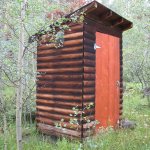
Altitude Sickness
At least half the visitors to the Rockies will experience some effect of the altitude. Mild (and benign) symptoms include fatigue, with shortness of breath with exertion, mild sleep disturbance, headache, nausea and/or decreased appetite. These are usually worst on the second day and are relieved with hydration, rest and Tylenol or ibuprofen. More serious and concerning symptoms include shortness of breath at rest, worsening headache, confusion, and difficulty walking. Any of these symptoms should be evaluated by a physician as they may require descent to a lower altitude for resolution.
To avoid altitude sickness, stay well-hydrated (3-4 quarts per day!), as acclimatization is often accompanied by fluid loss. Tobacco, alcohol and other sedating drugs can also worsen symptoms.
Alcohol
Alcohol at altitude can have a stronger effect than at sea level…we’re excited to celebrate with everyone, but please be safe!
Weather
Colorado temperatures fluctuate and evenings in the mountains can be cool, so dressing in layers is a good idea. Weather can also change quickly, with sunny skies interrupted by brief but impressive thunderstorms. Mornings are the best bet for clear skies and outdoor activities, but it’s always smart to take a raincoat along.
Sun Exposure
The sun is 40% stronger at the altitude of Breckenridge and the thin atmosphere makes it much easier to burn. Sunscreen and sunglasses with UV protection are critical, as is lip balm.
Bugs & Animals
The forests in Colorado are home to a wide variety of wildlife including some large animals such as bears and mountain lions, but there is little danger to the average visitor. Mosquitoes can be irritating but there are no ticks or serious insect-borne diseases. Poisonous snakes are also largely absent from the area.
